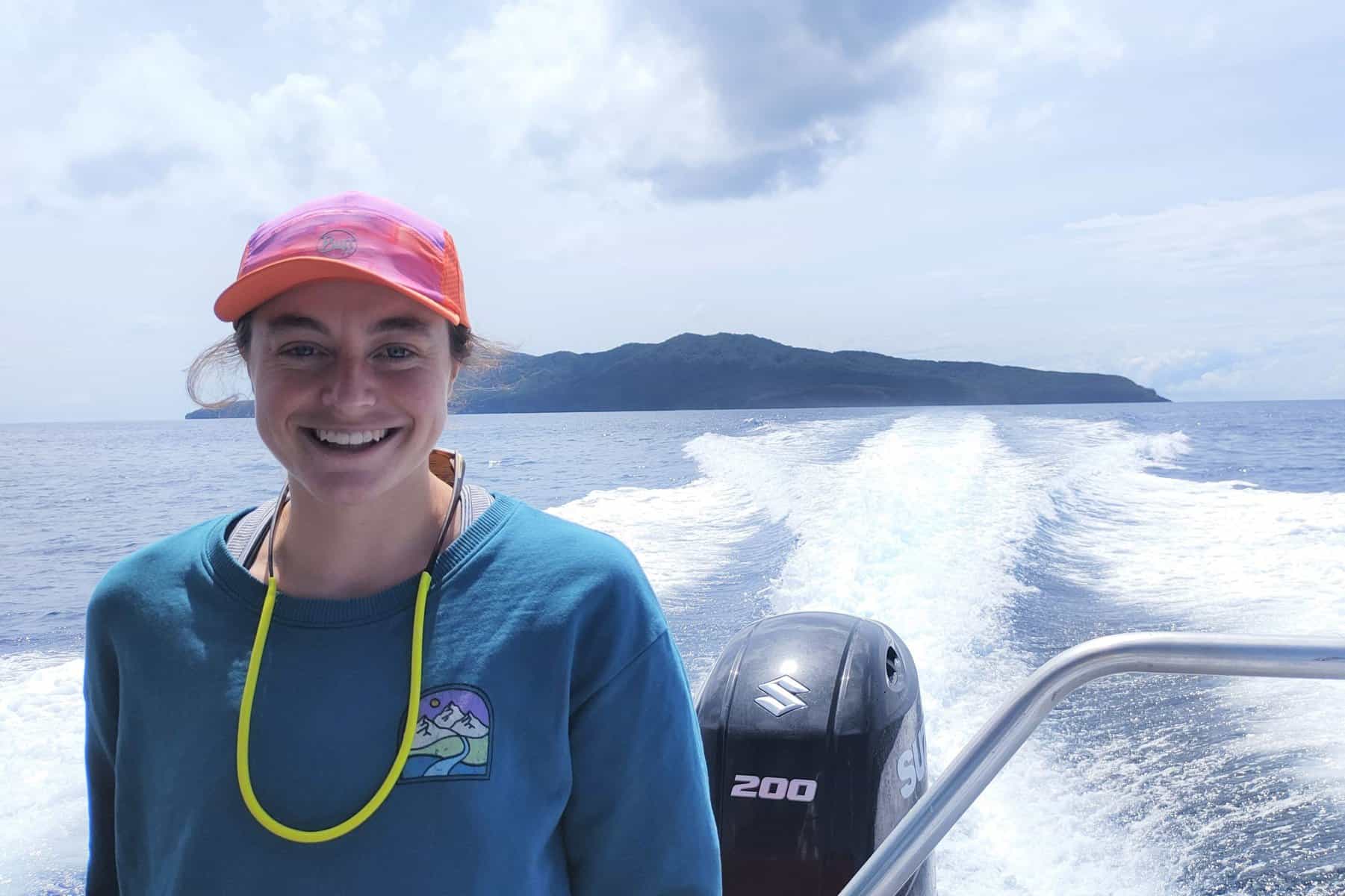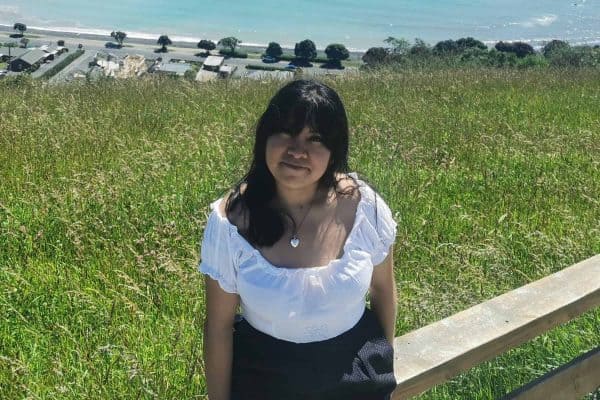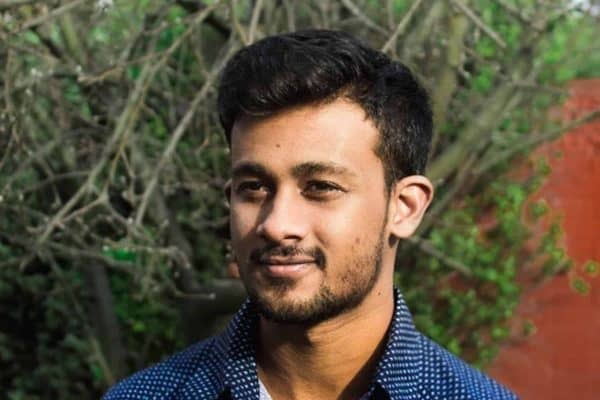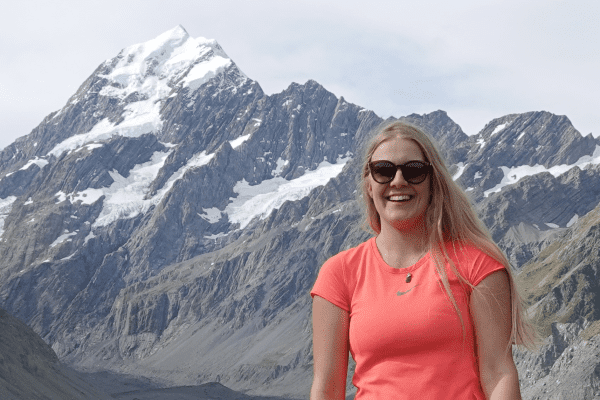Geochronology and petrogenesis of peralkaline volcano Tūhua, Aotearoa New Zealand
I studied geology at the University of St Andrews, Scotland where I developed a love for all things rocks. I was fascinated by the stories you could tell from the scale of a thin section to a map. After graduating, I worked in Scotland as an environmental geologist, investigating contaminated land, ground gas and legacy coal mining. From there I moved to Sydney, Australia and became a 3D ground modelling specialist for geotechnical projects. Whilst this work was interesting and varied, I couldn’t shake the idea of being more geology focused and really getting stuck into a research project. In early 2022 I moved to Aotearoa, NZ for the opportunity to study a volcanic island through Victoria University of Wellington with Professor Colin Wilson.
When I’m not in the lab or the field, I’m usually running the many trails around Wellington or hiking up mountains; bonus points if it’s another volcano!
My Project
Tūhua (Mayor Island) is a world-class example of an active peralkaline rhyolite volcanic island, situated in the Bay of Plenty. With a very different chemistry to the calc-alkaline centres of the Taupo Volcanic Zone, Tūhua is really an oddball in Aotearoa’s volcanic history.
With my research, I aim to develop a high-resolution geological map of the island, in collaboration with GNS Science, and a comprehensive geochemical and geochronological database of the sub-aerial eruptive episodes. From this, I will examine compositional trends over time to understand the origin and evolution of the volcano. In February 2023, we were welcomed to the island by the Tūhua Trust Board to carry out initial fieldwork studies, where I was able to observe the incredible variety of eruptive styles, collect samples for future analysis, and further understand the cultural importance of Tūhua (obsidian).
My project is funded by Resilience to Nature’s Challenges science sector under the Āhea riri ai ngā maunga puia? (When will our volcanoes become angry?) programme.
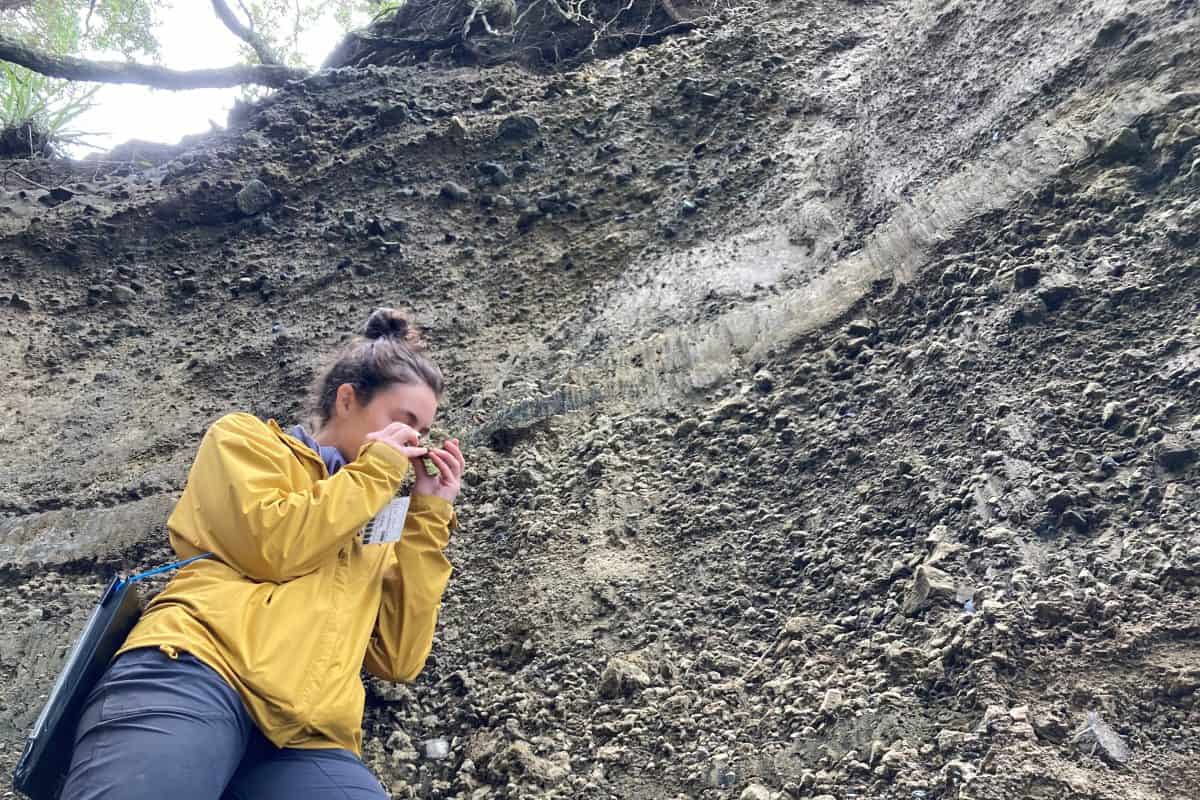
Next Steps
My research will enhance understanding of the present state of Tūhua and potential for future unrest, and contribute a valuable case example of a peralkaline magmatic system to the scientific literature. A key aspect of the project is collaboration with the Tūhua Trust Board and sharing scientific findings in the context of Mātauranga Māori to increase local understanding of the volcano and potential hazards.
